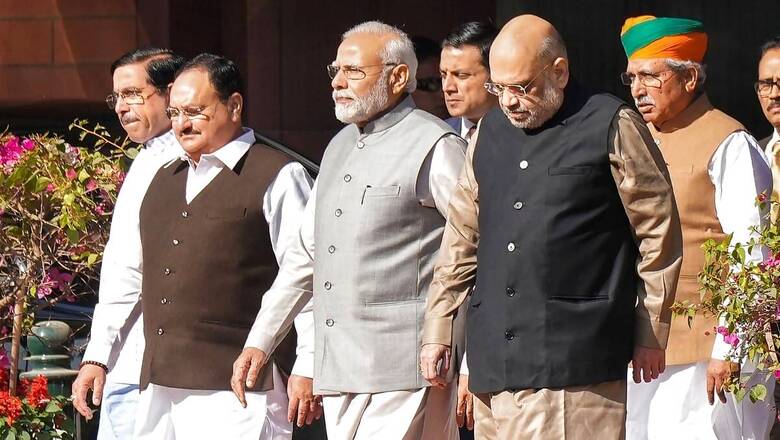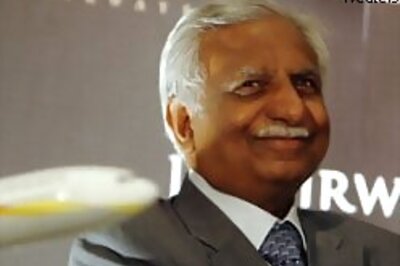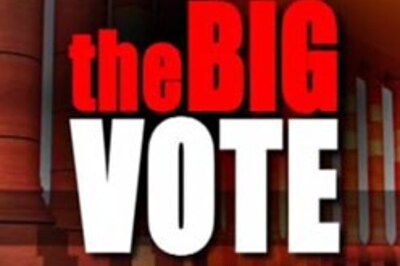
views
As the opposition parties meet in Patna on Friday over Bihar Chief Minister Nitish Kumar’s initiative to unite them against the ruling BJP, several key questions on the contours of the proposed alliance remain unanswered.
Those involved in the process claim that the mega opposition meet will be the first visible step in bringing together the anti-BJP camp and will attempt to identify common ground and issues against the ruling party. However, it remains unclear if the gathering will transcend the typical political rhetoric and lead to concrete and unified actions.
Several prominent leaders, including Mayawati from the BSP, Jayant Chaudhary of the RLD, and BRS chief and Telangana CM K Chandrasekhar Rao, will be absent from the meeting due to various reasons.
Nonetheless, amidst the political hullabaloo, the recent political developments indicate that the BJP has already begun working on the new National Democratic Alliance (NDA), and with initial success.
Two days after withdrawing support from the Nitish Kumar government, Jitan Ram Manjhi, the chief of Hindustani Awam Morcha (HAM), met Union Home Minister Amit Shah on Wednesday. Following the meeting, his party announced its re-entry into the NDA.
HAM, along with other former NDA partners, appears eager to re-join the alliance that has diminished over the years as the BJP — benefiting from Prime Minister Narendra Modi’s popularity — started garnering Lok Sabha numbers well beyond the magic figure of 272.
In 2014, the saffron party won 282 Lok Sabha seats, a number that increased to 303 seats in 2019.
The BJP’s aggressive electoral push made many of its allies feel insecure as the party encroached upon their respective political territories.
The alliance, which completed 25 years on May 15 this year, was the formalisation of four of the BJP’s old allies: Shiv Sena, Samata Party, Haryana Vikas Party, and the Akali Dal at the national level in 1998.
A year earlier, Shiromani Akali Dal-BJP had stitched a pre-poll alliance for the 1997 Punjab assembly polls.
Other parties like Biju Janata Dal, Trinamool Congress, Lok Shakti, AIADMK, PMK and others joined in to form the NDA. The Telugu Desam Party provided support from outside. However, the first NDA government, led by Prime Minister Atal Bihari Vajpayee, lasted only 13 months as the AIADMK withdrew its support due to the central government’s refusal to dismiss the DMK government in Tamil Nadu.
The second NDA government (1999-2004) saw DMK replacing AIADMK and others like National Conference joining the NDA bandwagon. Despite leaders from diverse ideological backgrounds, ranging from the ultra-right to the Left of the center, this coalition government became the first in independent India to complete its full term. The successful governance of a coalition government also provided a blueprint for the subsequent UPA government.
Throughout its evolution, political parties representing various ideologies and regions have had their association with the NDA.
In 2002, the Lok Janshakti Party was one of the first to withdraw from the NDA. The departure of the party led by Ram Vilas Paswan was a direct consequence of the Gujarat riots. In 2003, the DMK also decided to leave the alliance due to the alleged misuse of POTA by the Tamil Nadu government. Subsequently, the DMK aligned with the Congress party.
In 2007, the JD(S) and Mamata’s TMC exited the NDA for various reasons. In 2009, Naveen Patnaik’s BJD also decided to step out, while the TRS led by K Chandrasekhar Rao joined the alliance in the same year.
The exodus briefly slowed down after NDA came to power in 2014. However, the aggressive political expansion plans of the BJP created tensions with regional allies, leading to heavyweights quitting the alliance on one pretext or the other.
In March 2018, the Telugu Desam Party severed its ties with the NDA due to the disagreement over granting special category status to Andhra Pradesh. During the same year, the BJP ended its three-year alliance with the PDP due to divisions over a range of issues.
The year 2019 saw BJP’s oldest ally Shiv Sena moving away over the power-sharing agreement in Maharashtra. Another old ally and NDA founding member SAD ended its relationship in September 2020 over the farm bills.
The last major party to move out was Nitish Kumar-led JD(U) as Kumar, in August 2022, dumped his government with the BJP to form a new one with the RJD.
The question arises as to why the BJP, which independently won 303 seats in the previous Lok Sabha elections and faces no sign of ebb in popularity of PM Modi, would require additional electoral allies.
The simple explanation is that while the prime minister remains popular, Karnataka and Himachal results showed that his acceptance might not be enough to ensure numbers for a return. In many states like Gujarat, Haryana, Himachal, Karnataka, Madhya Pradesh, Rajasthan, Uttarakhand etc., the party has already achieved almost full electoral success and there’s not much scope for expansion.
In states like Bihar, Odisha, Bengal, Andhra Pradesh and Telangana, regional parties still hold sway, and the Karnataka result has left BJP without power in the South. The Maharashtra alliance is yet to face an electoral test. Besides, 10 years of anti-incumbency will definitely weigh high.
Recognising the potential pitfalls, the saffron party has reportedly begun reaching out to some estranged allies while also seeking new ones.
Also, to ensure their political survival, many regional parties which have been cornered in their respective states by the non-NDA parties are reaching out to the NDA camp.
The Indian Express, citing sources within the BJP, has reported that the party leadership has initiated discussions with potential alliances such as the JD(S) in Karnataka, the TDP in Andhra Pradesh and Telangana, and the SAD in Punjab.
In a signal to the BJP, these three parties had supported NDA presidential candidate Droupadi Murmu last year over the united opposition candidate Yashwant Sinha.
Last month, a hint of the possible new NDA and its potential allies was also reflected in the political attendance during the inauguration of the Parliament building. While 20 opposition parties boycotted the event, unexpectedly, parties like the BSP, SAD, TDP, and JD(S) attended it.
The SAD, already on the electoral down slope, suffered back-to-back shocks — first in the successive assembly polls followed by the death of party patriarch Parkash Singh Badal in April this year. With just three seats, the party was relegated to a distant third position behind AAP and Congress in the last assembly polls.
The JD(S) is currently confronting an existential crisis as it wrestles with the staggering electoral results in Karnataka. The party’s seat count has plummeted to its lowest level of 19 since it first entered the realm of elections in 1999.
Recently, in response to the question of whether there is a possibility of JD(S) aligning with the BJP, party supremo and former PM HD Deve Gowda had raised a counter question, asking to find him a political party in the country that has engaged in politics without establishing some form of association with the BJP.
Experts also believe that both the BJP and JD(S) could potentially benefit, to some extent, from forming an alliance in 6-8 seats, either through direct collaboration or a tacit understanding.
Earlier this month, TDP chief Chandrababu Naidu met Amit Shah and BJP president JP Nadda in Delhi, which sparked an alliance buzz. In the days following this meeting, Shah, during a rally commemorating the nine years of the BJP-led NDA government in Visakhapatnam, criticised the otherwise friendly YSRCP government, stating that in the last four years, the Jagan Mohan Reddy government has been involved in nothing but corruption and scandals.
Besides Lok Sabha polls slated around April-May next year, Andhra Pradesh will go for assembly elections.
In Bihar, the epicenter of the current attempt at opposition unity, the BJP is in the process of stitching alliances with smaller parties that are against the Mahagathbandhan. Recognising the significance of caste-based politics in the state, the saffron party is making efforts to establish some form of electoral arrangement with Upendra Kushwaha’s RLJD and Mukesh Sahani’s VIP.
While former Union minister Kushwaha comes from the Koeri caste, which is the second-largest group among the backward classes after Yadavs in Bihar, Sahni belongs to the extremely backward caste Mallah (fisherfolk) community, which holds approximately 3 per cent of the votes in the state.
Few months back, both Sahni and Kushwaha were provided central security.
Ex-CM Manjhi’s HAM (S), which has a Dalit Musahar voter base representing roughly 2 per cent of Bihar’s total population, has already joined the NDA. In addition, efforts are underway to bring Lok Janshakti Party leader Chirag Paswan on board.




















Comments
0 comment